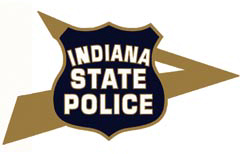June 25, 2012
 06/26/12 Reducing traffic fatalities on Indiana’s urban and rural roads has been a consistent objective of the Indiana State Police and until this year success has been achieved with year after year reductions in deaths caused by traffic collisions. In large part the success has been the result of what is frequently referred to as the three ‘E’s’; Enforcement, Engineering and Education. The ‘enforcement’ part of the three ‘E’s’ is self explanatory; consistent aggressive enforcement of Indiana’s traffic laws contributes to more responsible driving so as to avoid being pulled over and cited for a traffic violation. The ‘engineering’ component reflects the ongoing improvement reflected in better engineered roads and better engineered vehicles which offer more protection for occupants. And finally, but very important, is the ‘education’ part of the three ‘E’s’. Education comes in many forms; from the print, TV or radio story about local crashes, to public safety announcements that educate citizens about aspects of risky as well as safe driving behaviors. Education also includes training and programs geared toward new and younger drivers to better prepare them to handle a vehicle responsibly.
06/26/12 Reducing traffic fatalities on Indiana’s urban and rural roads has been a consistent objective of the Indiana State Police and until this year success has been achieved with year after year reductions in deaths caused by traffic collisions. In large part the success has been the result of what is frequently referred to as the three ‘E’s’; Enforcement, Engineering and Education. The ‘enforcement’ part of the three ‘E’s’ is self explanatory; consistent aggressive enforcement of Indiana’s traffic laws contributes to more responsible driving so as to avoid being pulled over and cited for a traffic violation. The ‘engineering’ component reflects the ongoing improvement reflected in better engineered roads and better engineered vehicles which offer more protection for occupants. And finally, but very important, is the ‘education’ part of the three ‘E’s’. Education comes in many forms; from the print, TV or radio story about local crashes, to public safety announcements that educate citizens about aspects of risky as well as safe driving behaviors. Education also includes training and programs geared toward new and younger drivers to better prepare them to handle a vehicle responsibly.
As 2012 has progressed the number of urban crashes is slightly lower but the number of rural crashes and deaths has increased. The Indiana State Police has analyzed this trend, and unlike the past, no clear pattern of location for these fatal crashes is materializing. What we see are random fatal crashes occurring in unpredictable locations. What did materialize though are the factors resulting in these senseless rural crash deaths. They are: 1) Driving off the right edge of the road; 2) Failure to yield the right of way and disregarding traffic signals; 3) Unsafe speed; and 4) Driving left of center. Historically, these violations are associated with inexperienced drivers, or drivers that are fatigued or distracted by an array of electronic devices, other passengers or eating and drinking beverages while driving.
Another interesting observation was the correlation between the numbers of Indiana State Police traffic contacts (tickets or warnings) issued as compared to the number of reported traffic crashes from all police agencies across Indiana. From July 2008 through March of 2012, as noted in the below graph, when the number of state police traffic enforcement contacts decreased there was an increase in the number of crashes and when the number of state police enforcement contacts increased the number of crashes showed a decrease in the same time frame.
In an effort to stop the escalation of traffic crash deaths, the state police are embarking on an aggressive traffic violation enforcement program. This program will use a combination of marked and traditional unmarked patrol cars, as well as non-traditional stealth patrol vehicles inclusive of Ford Mustangs, aircraft patrols and state police vehicles that look like INDOT work trucks that will concentrate their enforcement efforts near construction zones.
The Superintendent of the Indiana State Police, Dr. Paul Whitesell, commented, “We are steadfast in our commitment to minimize the number of crashes that injure and kill people on our roadways and will use all tools and enforcement methods at our disposal to stop such needless tragedies.”